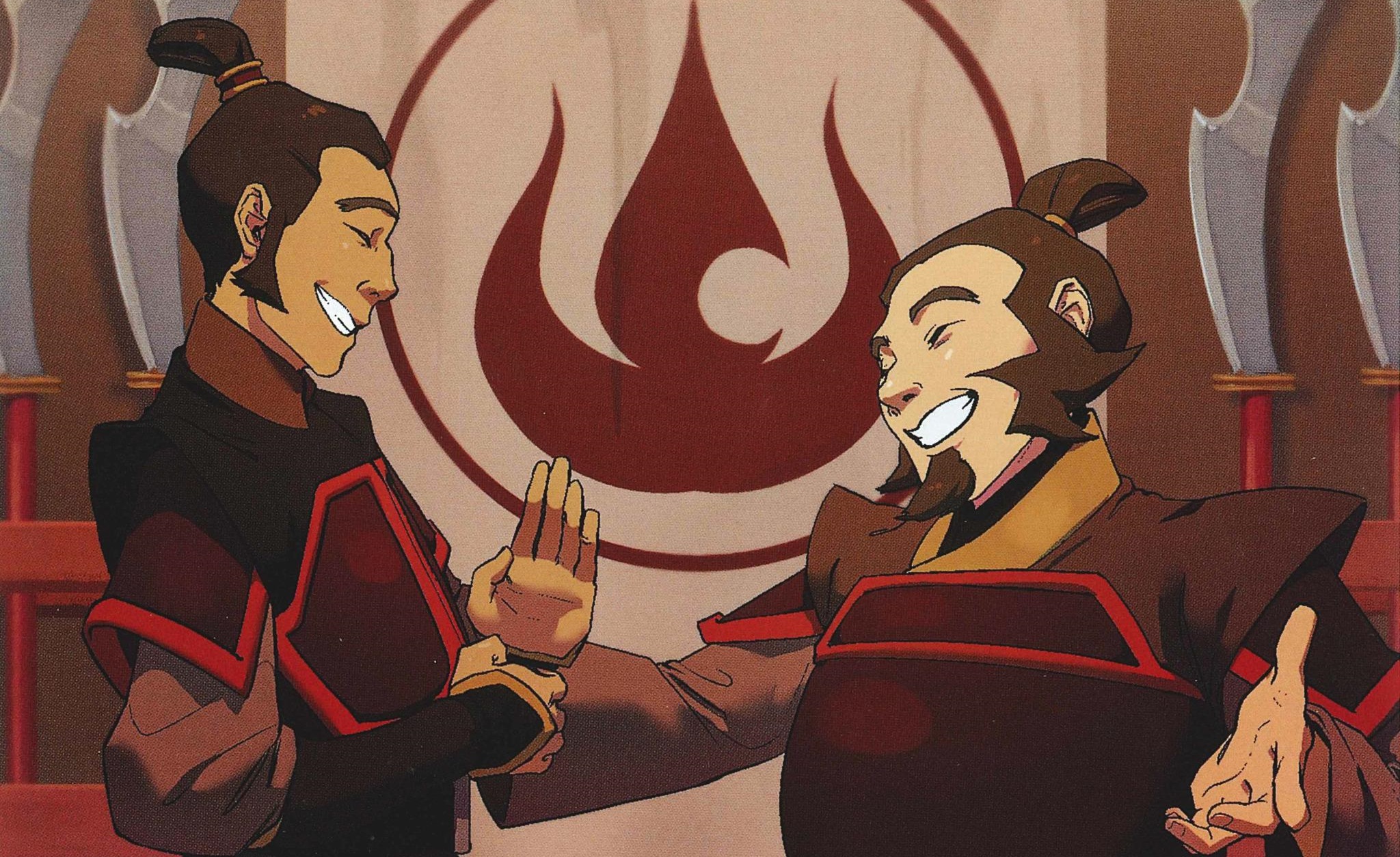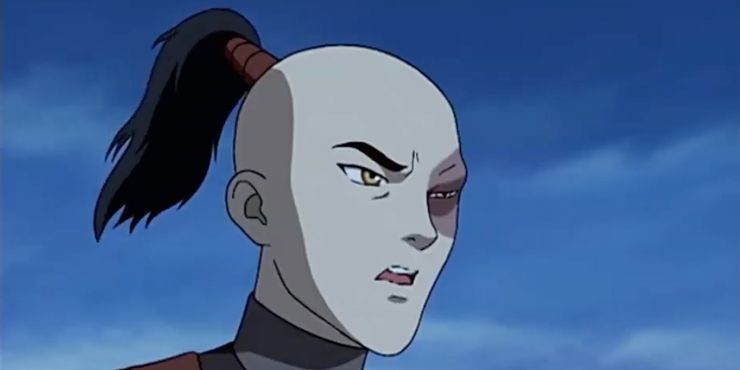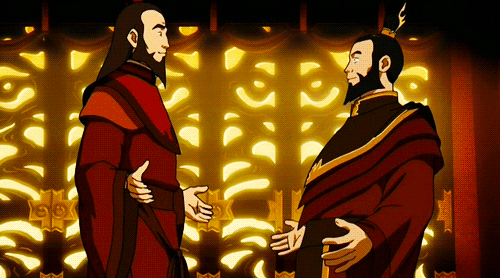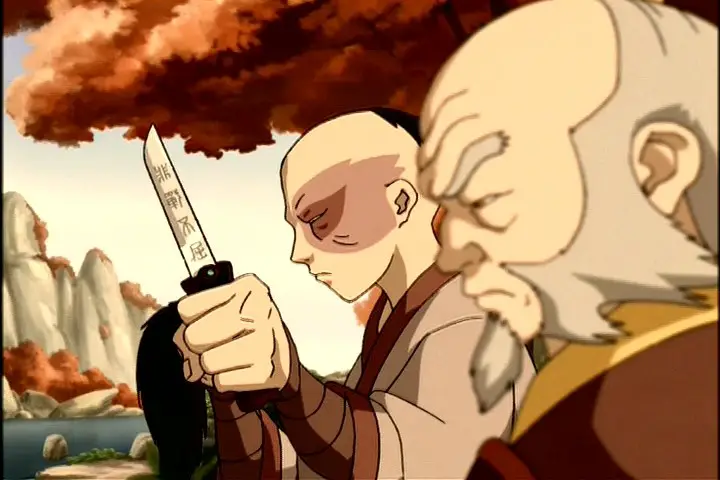Although Avatar: The Last Airbender (ATLA) originally aired in 2005, it still remains a favorite among kids and adults alike. The show set the standard so high for television series with the way it tackled sociopolitical issues and demonstrated fantastic world-building. Since then, the fictional universe has grown as more canonical materials were released.
Aside from the show’s sequel, The Legend of Korra (TLOK) that aired in 2012, comic series and books also continued to tell the stories of wonderful characters from the Avatar universe. Because world-building goes on and keeps on expanding, some concepts now have more depth to them than they had before. In particular, it’s interesting how F.C. Lee’s Kyoshi duology, The Rise of Kyoshi (TROK) and The Shadow of Kyoshi (TSOK), elaborated on the significance of the Fire Nation’s hair and topknot.
In the ATLA, viewers saw Prince Zuko and General Iroh cut their topknots at the beginning of Book 2. At the time, its significance was no other than starting anew, getting better disguises, and cutting off their ties with the Fire Nation. With the Kyoshi novels, fans get a deeper and more meaningful context of this specific scene.
However, before going into detail about the act of cutting the topknot itself, it is important to have more background on the Fire Nation’s strict rules, decorum, and honor code with regards to their hair.
It is highly off-limits

According to TROK, members of noble families from the Fire Nation won’t let just anyone touch their hair. “It was never touched except in circumstances akin to death,” the book said. This small detail was further elaborated in TSOK when Avatar Kyoshi visited the Fire Nation for a holiday festival.
“Touching someone’s head outside of your closest family is one of the most disrespectful gestures imaginable,” Rangi said. This meant Kyoshi couldn’t touch Rangi’s head, face, or hair even though she had always done so in the past because they needed to follow proper decorum.
This does not apply to royal servants, as seen in ATLA Book 3 where there was a servant brushing Azula’s hair prior to her coronation.
It signifies their social power

Fans often make fun of Zuko’s curious hairstyle from ATLA Book 1. It was very interesting how that hairdo, a long ponytail contrasting an otherwise bald head, was unique to him. Some people theorized that his hair must have gotten singed, so he shaved most of it. There were no other Fire Nation characters in the series that donned the same look, so many thought it must have been a choice for character design. In TROK, the reason behind it was explained.
Rangi, Avatar Kyoshi’s firebending teacher, was always visibly irritated whenever members of the Flying Opera teased her and called her “Topknot.” She has a very serious attitude, as someone from the Fire Nation, but the main reason she hated the nickname was because of how disrespectful it is.
“She’d heard that sometimes the losers of an important Agni Kai would shave parts of their head bald, laying patches of their scalp bare to symbolize an extra level of humility from their defeat, but the topknot was always sacred.”
This explains Rangi’s annoyance, because something so revered was being used to tease her. It explains Zuko’s Book 1 hairstyle as well. Losing an Agni Kai, the ancient duel between two Firebenders for their honor, meant that he had to shave his head bald, sparing only the sacred topknot. Thanks to this additional piece of information, Zuko’s post-banishment hairstyle has been justified.
It represents their honor

Hei-Ran, Rangi’s mom, was a high-ranking military commander and Avatar Kuruk’s firebending teacher. In TROK, she pulled her hairpin out of her tightly bundled topknot and hurled it against the wall in frustration. According to the book, the way she treated her hair meant that she personally felt she was losing her honor.
Another crucial moment was when Rangi’s topknot was “crudely severed” from her head by Jianzhu, the antagonist. It was very traumatic, something likened to a war injury. Rangi didn’t want Kyoshi to see her like that, but Kyoshi couldn’t care less and was only concerned that she was alive and well. “In fact, it was easier for Kyoshi to rest her cheek on Rangi’s head now, without all the sharp pins in the way,” the novel said.
However, the most pivotal moment may be the instance when Hei-Ran cut off her topknot as an acknowledgment of personal dishonor. She cited her reasons in front of Fire Lord Zoryu and let a number of people bear witness to her act. This moment was a “ritual of ultimate humility” and she left the family’s honor in Rangi’s hands.
“The other reason I cut my topknot is so that there will be no further disgrace to the country if he kills me. An honorless person does not need to be avenged. I can bear any insult, because there’s no more person to insult.”
The bottom line

The Fire Nation has always been very rigid when it comes to their strict codes, and this is very apparent with how they show discipline, respect, and power through their hair. All of these cases illustrate just how significant it was for Zuko and Iroh to cut their own topknots. Although they had other reasons, such as losing their identity and social power, it still boiled down to this: they had lost their honor.
It also fits with ATLA’s world-building where the creators heavily drew inspiration from Asian influences. In imperial Japan, cutting off their topknot is a symbol of great dishonor. Knowing all these additional contexts definitely sheds new light on that scene, as well as Azula’s messy topknot in ATLA Book 3. Thanks to the Kyoshi duology, we’re still learning new things about the series, even 15 years after it was first aired.
Have strong thoughts about this piece you need to share? Or maybe there’s something else on your mind you’re wanting to talk about with fellow Fandomentals? Head on over to our Community server to join in the conversation!

